Creeping phlox, also known as moss pink and mountain phlox, is a perennial plant that is an absolute must-have for many rock gardens around the world. It belongs to the family Polemoniaceae that has around 65 different species. This flower stands out because it blooms in spring and is semi-evergreen.
Native to rocky landscapes of North America, creeping phlox requires little maintenance to thrive. It can grow in any soil and will create a colorful flower blanket in your garden. The name phlox comes from a Greek term for a flame, referring to the vividly colored flowers.
Native Americans have a special connection with this plant, and they even used it for treating various medical conditions in the past. If you often let your dogs or cats play in the garden, they can nibble on the creeping phlox flowers and leaves. The plant is not toxic and won’t harm them in any way.
About Creeping Phlox
- Creeping phlox is low-maintenance and doesn’t require any extra care to grow. The plant prefers direct sunlight. Partial shade is perfectly fine as well, depending on your location and climate.
- Keeping this plant happy is simple. It can quickly adapt to any terrain and enjoys evenly moist, well-drained soil. Compost and fertilizers are welcome but not obligatory. If you decide to use fertilizer to give your plant a small boost, the best time for it is in late winter or the beginning of spring.
- The flower should be watered every week, even after the blooming period is over. Creeping phlox has pointy green leaves throughout the summer and fall, but it won’t dominate your landscape too much. The stems that carry the leaves will gradually become wooden.
- Propagation is very straight forward as well and will require some digging. You can propagate creeping phlox through the division of the root. Just make sure you cut it in half evenly.
- Even though it is not used to them, creeping phlox can adapt to very high temperatures. When planted in rock gardens, the surrounding terrain could heat the plant even more. Just remember to water it frequently. It is not drought-resistant, but it can survive without water for some time. However, it needs moisture in extreme heat.
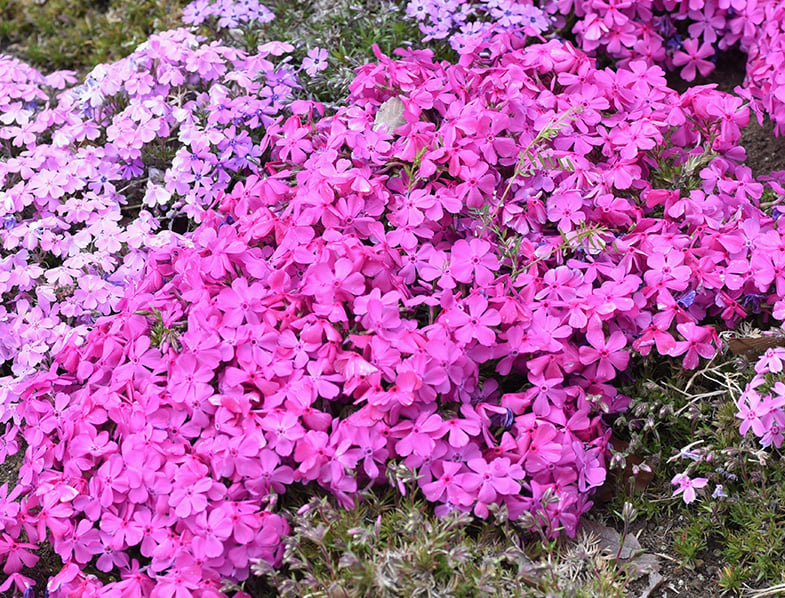
Creeping Phlox Features: An Overview
- Creeping phlox is a common sight in rock gardens. But this flower can add a lot of color to your landscape regardless of the location. This plant goes incredibly well with tulips and carnations because they tower over it. Additionally, it attracts butterflies and hummingbirds, so your yard will be bustling with life in spring.
- The flowers can be red, white, blue, pink, purple, or lavender. They have a simple shape, pleasant fragrance, and grow super close to each other. Creeping phlox blooms for three to four weeks, usually starting in the middle of spring.
- When mature, creeping phlox is between 4 and 6 inches tall, depending on the specie. It can spread for 24 inches, creating a full ground cover of bright and vivid flowers.
- This plant is native to eastern and central North America, but it can be successfully grown in any climate, as long as the weather is not too extreme. Add a bit of fertilizer, make sure that the ground is slightly acidic, and creeping phlox will thrive in no time.
- Some gardening enthusiasts do prune their creeping phlox to give it a neater shape, but it is not necessary. You can let this flower grow naturally, and it will still look breathtakingly good. On the other hand, pruning can make the leaves grow denser. If you decide to prune your creeping phlox, do so in summer, after blooming.
- Creeping phlox is generally more prone to diseases than pests. However, extreme weather conditions such as hot and dry climate can lead to an infestation of spider mites. Humid weather can attract foliar nematodes. If you notice any color changes on the leaves of your creeping phlox, act fast and remove the diseased foliage.
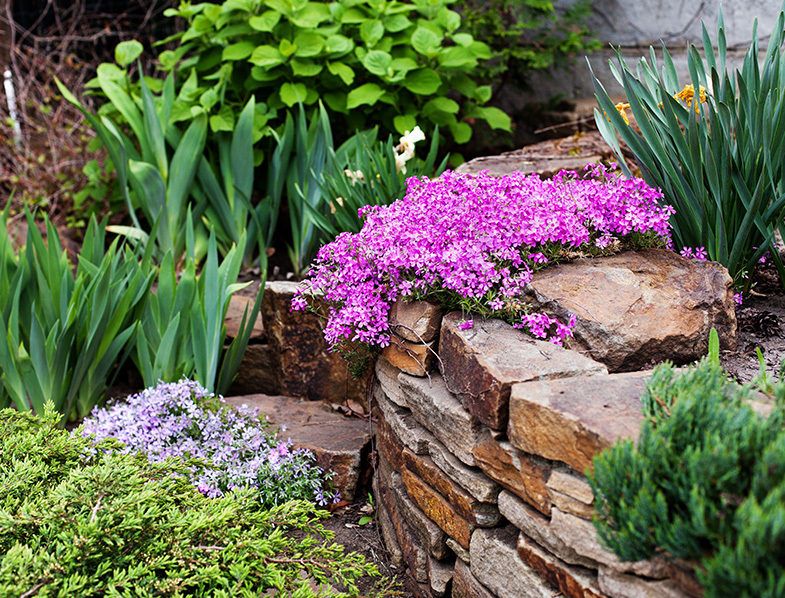
Growing Creeping Phlox
Creeping phlox doesn’t require a lot of care in general. Plant it in a sunny area of your garden, and you will enjoy the vividly colored flowers all spring. Partial shade will work as well. This flower doesn’t need a lot of moisture, except in summer. It can go for short periods without water but don’t make it a habit. Fertilizing the soil once a year is recommended, especially right before spring.
The flower covers the ground and could spread over a wide area. Therefore, you could prune the stems a bit to keep it tidy. Weeds and other plants might start growing in the same area. They could ruin the overall appearance of creeping phlox, especially when it is in bloom. The best way to deal with this is to pull the weeds by hand, making sure you get the root.
This plant is one of the best choices for landscaping enthusiasts. It creates a gorgeous flowery cover that looks stunning on hills or uneven terrain. However, you can still use it even if your garden is completely flat. The flowers can create a gorgeous border along the pathways in your yard or even fill up the empty spaces in your rock garden.
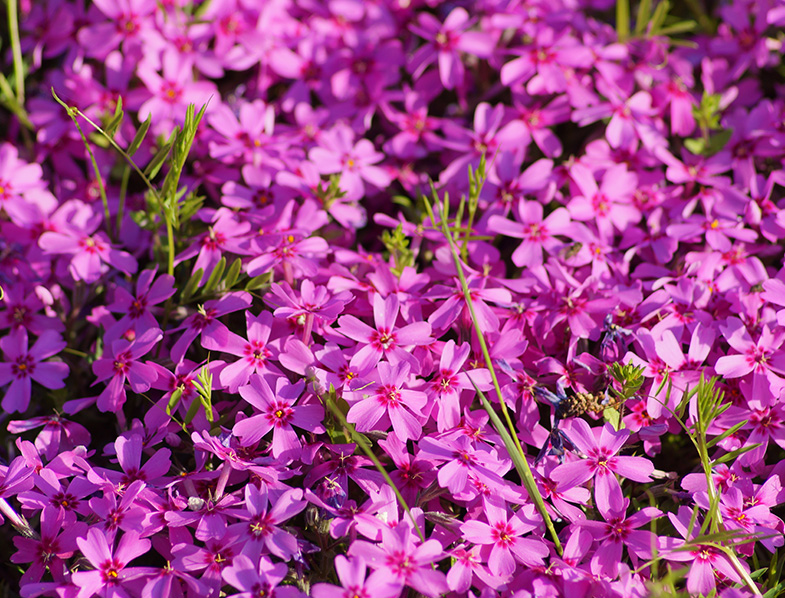
The star-shaped flowers are small and condensed. You will discover thin pointy leaves beneath them that continue to be green even in fall. Creeping phlox produces long stems that are green when new, but turn brown and woody with age. These stems might stop growing flowers as the time goes by, so you should trim them occasionally.
Pests could be a problem if you live in a very dry or humid place. But creeping phlox is more prone to fungal diseases like powdery mildew and southern blight. Powdery mildew is common among the plants from this specie. A fungal disease could dry out the plant and make the leaves look yellow. So watch out for white spots on the stems, as well as a thin greyish coating.
Keeping your creeping phlox happy means you need to improve the air circulation. Don’t plant creeping phlox close to each other because overcrowding can damage the flower. It is important to give each plant a lot of space to grow. You should go for 16 to 24 inches between every creeping phlox in your garden. Fertilizing the soil once a year will give you a better bloom and a thicker coverage.
Watering Creeping Phlox
You should water creeping phlox weekly. This plant is capable of surviving a short period without water, so don’t be stressed if you forget about it occasionally. Summers could be tricky because the plant needs more moisture. If the temperatures are high, you could even water it more than once a week. Check if the soil is moist with your finger.
Also, watch out for the changes in the color of the plant. Leaves that are turning yellow indicate your creeping phlox needs your attention. Creeping phlox that is a part of your rock garden might need extra moisture if the weather is hot and dry. The terrain that surrounds the plant could scorch the leaves. These changes in the foliage will be visible right away because the plant will turn dark green or yellow, so you can water it in time.
- Creeping phlox is a perennial cushion plant that comes in many beautiful colors. The flowers bloom each spring in a variety of colors and spread outwards rather than upwards.
- Creeping phlox is known to be deer-resistant and does well in drought conditions, making it a relatively low-maintenance plant for the yard.
- Grows best in well-drained or even sandy soil in full sun.
- Attracts bees and butterflies, making it an excellent pollinator. As with all annual flowers, annual phlox must be allowed to reseed for a large display the following year.
- Sow 3 - 4 of these flower seeds per plant, spaced 10 - 12 inches apart. Annual phlox care includes pruning the plant after the first blooms. Pruning encourages a second bloom of the phlox flowers.
- Creeping Thyme Thymus Serpyllum is a robust, hardy perennial subshrub native to Europe and North Africa. Creeping Thyme seeds can be started indoors 6-8 weeks before last frost or directly outdoors in spring.
- These seeds are very tiny so it's best to use the shaker method and mix your seeds with sand to spread, or mix your packet with 4 cups of peat and spread in your garden area. Thyme likes moist soil while germinating so don't let your soil dry out (water from below and cover pots with plastic wrap). These germinate very slowly and the difficult part is keeping them cool, moist, and exposed to light (during the day) for 30 days.
- Or keep your pot/tray (with holes in the bottom) in a tray containing about 1" of water and cover lightly with plastic wrap. Keep your pot/tray under lights until germination. Thyme need a cool and moist environment to germinate.
- Plant type: Perennial.Germination lighting: Light.Germination days:21-30 days.Maturation days:60 days.
- Made in USA - It makes excellent for moms, adults and gardening box for men. Share with your family and friends its happiness from germination to flowering and fruiting.If the package is damaged, in insufficient quantity, or can not germinate, please contact us to replace it for you.
- Creeping phlox is a perennial mat-forming plant that comes in many beautiful colors. These flowers bloom each spring and come in many different colors, spreading outward, rather than up.
- This makes creeping phlox an excellent choice for providing not only a splash of color but also ground cover for gardens.
- Creeping phlox is known to be resistant to deer and does well in drought conditions, making it a relatively low maintenance addition to yards.
- Another nice feature of creeping phlox is that its flowers attract butterflies.
- As creeping phlox spreads, it can also be divided up and easily transplanted to different areas where more ground cover is desired.
Last update on 2024-10-10 / Affiliate links / Images from Amazon Product Advertising API
Propagating Creeping Phlox
Creeping phlox is propagated through division. You can divide this plant every two or three years, and the roots will remain healthy. The best time for this is in spring, right after the blooming period. So the first thing you need to do is dig up the root. Use a smaller spade for this and double-check if you got the whole root up.
Then cut it in half as evenly as possible. Place each half back into the ground. Carefully add more soil around the new plants. Remember to water them right after division, and maintain the moisture for about a month after propagation. If your creeping phlox starts growing new stems, you have successfully divided the plant.
Final Thoughts
Every garden needs a splash of color in spring, and the easiest way to make your landscape stand out is by planting creeping phlox. Taking care of this perennial ground cover is not complicated, so it is clear why it gained so much popularity among gardening enthusiasts.
Creeping phlox will grow in any soil, but if you want to keep it healthy and as beautiful as possible, make sure the ground is moist and well-draining. Don’t forget to provide the plant with plenty of sunshine. This flower spreads fast and has small star-shaped flowers. They can be red, white, blue, purple, or pink and cover an area of 24 inches in width.
It is a fabulous little plant that blooms in mid or late spring. Once the summer rolls in, you will get to enjoy its green foliage that looks equally good. Creeping phlox is a perfect plant for landscaping or rock gardens. Plus, it is somewhat resistant to drought and pet-friendly!
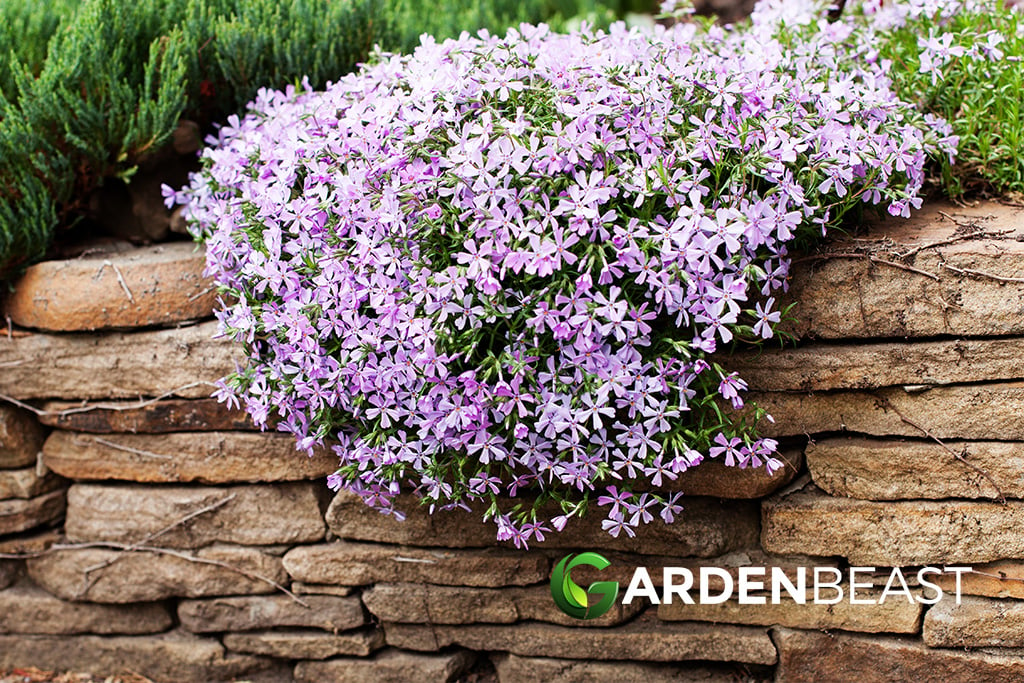

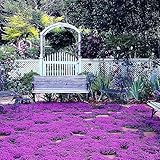

1 Comment
Every winter my creeping phlox foliage dies & turns a light tan, dry & prickly. In spring the new growth comes through the dead stickery foliage but the brown shows through in places. I can’t pick through to remove the dead parts & often the long bare stems have new growth on the ends. Help! Is there a way to remove the dead ‘stuff’ from the top of the plant? I’m in zone 4 of Iowa. The beds are healthy but look terrible with all the dead debris on top.